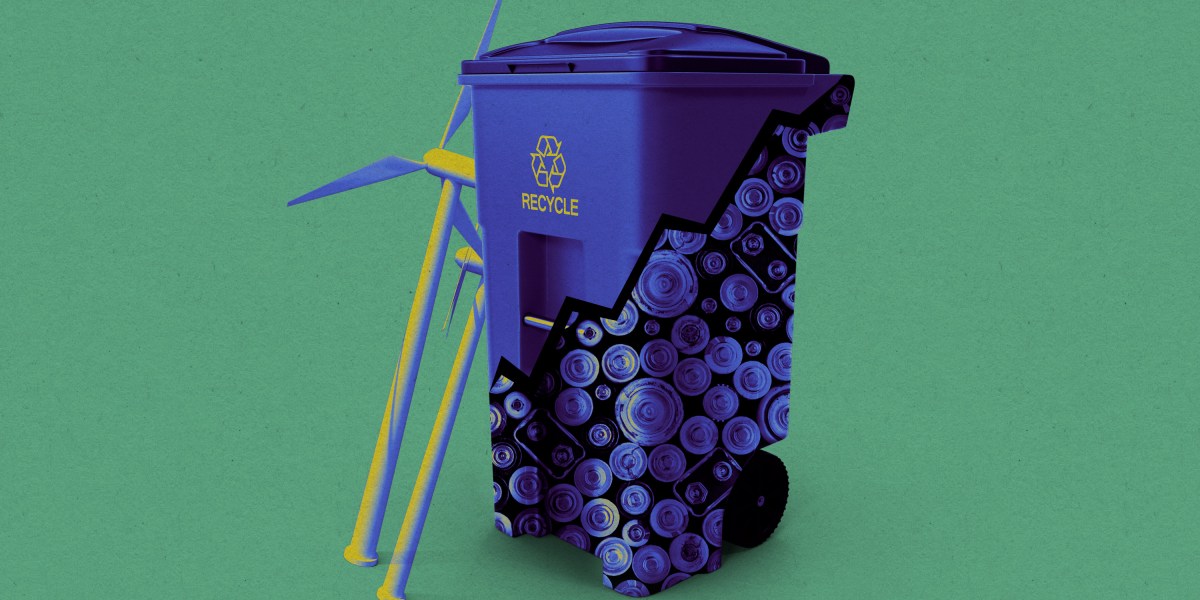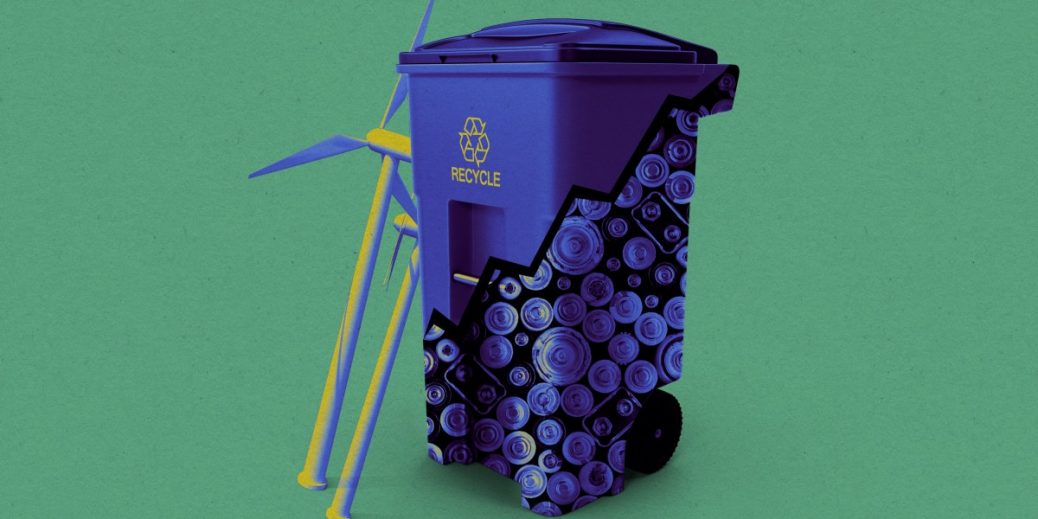
For my most recent story, I was researching the materials used for the magnets that power EVs and wind turbines. (Read the result here!) And once again, I was struck by a stark reality: there are massive challenges ahead in material demand for climate technologies, and unfortunately, recycling alone won’t be enough to address them. Let’s take a look at why recycling isn’t always the answer, and what else might help.
Mind the gap
We’re building a whole lot more climate technologies than we used to, which means there aren’t enough old, discarded technologies sitting around, waiting to be mined for materials. Obviously the growth in clean-energy technologies is a great thing for climate action. But it presents a problem for recycling.
Take solar panels, for instance. They tend to last at least 25, maybe 30 years before they start to lose the ability to efficiently harness energy from the sun and transform it into electricity. So the panels available for recycling today are those that were installed over two decades ago (a relatively small fraction are ones that have been broken or need to be taken down early).
In 2000, there was a little over one gigawatt of solar power installed globally. (Yes, 2000 was nearly 25 years ago—sorry!) So today’s recycling companies are competing with each other for that relatively small amount of material. If they can hang in there, there will eventually be plenty of solar panels to go around. Over 300 gigawatts of solar power were added in 2023.
This gap is a common challenge in recycling for other technologies, too. In fact, one of the problems facing the growing number of battery recycling companies is a looming shortage of materials to recycle.
It’s important to start building infrastructure now, so we’re ready for the inevitable wave of solar panels and batteries that will eventually be ready for recycling. In the meantime, recyclers can get creative in where they’re sourcing materials. Battery recyclers today will rely on a lot of manufacturing scrap. Looking to other products can help as well—rare earth metals for EV motors and wind turbines could be partially sourced from old iPhones and laptops.
Closing the loop
Even if we weren’t seeing explosive growth for new technologies, there would be another problem: no recycling process is perfect.
The issues start at the stage of collecting old materials (think of the iPods and flip phones in your junk drawer, gathering dust), but even once material makes it to a recycling center, some will wind up in the waste because it breaks down in the process or just can’t be economically recovered.






Recent Comments